Are you shopping for a new bike and having doubts on what size is right for you? In this article I will tell you about the 3 ways of determining what bike is right for you:
- Using Size charts, your height and your inseam.
- Using in-person checklist
- The Bikefit 3D Tool
Hopefully, by the end of this article you’ll be able to confidently pick the right bicycle size for you or at least know which ones to avoid.
Why is bike sizing so difficult?
Don’t worry it’s not just you. In fact, even the most experienced cyclists can struggle at choosing the right bike size.
Across different brands, a 54 (medium) sized bike frame can vary quite a lot. Sometimes even within the same manufacturer, the sizing of different models have major geometry differences.
To complicate things even more, different companies use different sizing standards. For instance a bike of size Large, 56 cm and 19” can all mean the same thing.
Method 1: Bike Size Charts by height
So, first off, you’ve got those size charts, which basically say, "Hey, if you're this tall, you should ride this size bike". They typically look like this:
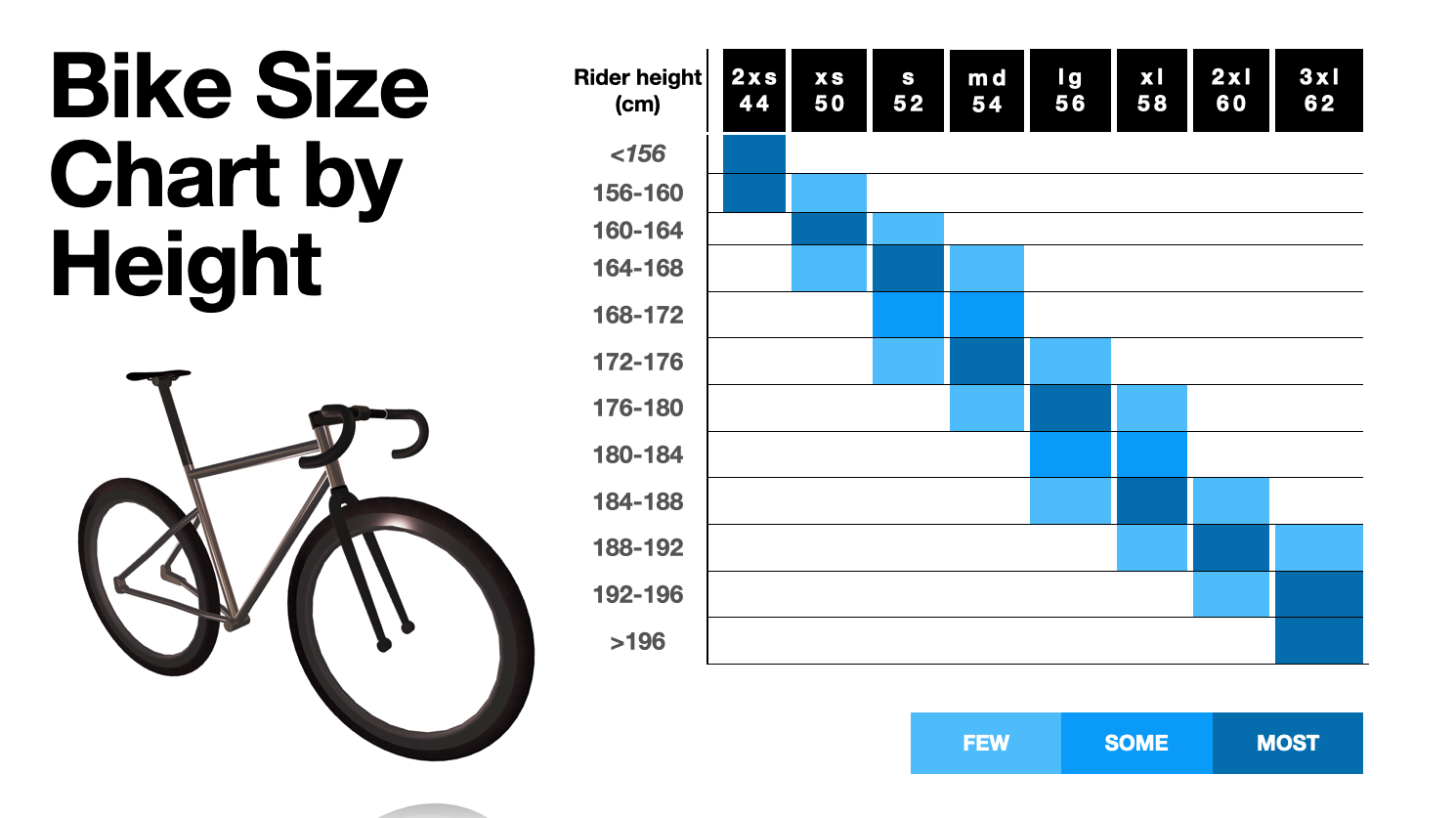
Sounds simple, right? But hold up! Our bodies are more than just height. We’ve got different proportions too. After all, how is it that I need 2 measures to buy a pair of pants, but only one for a bike worth thousands of dollar bike? Come on!
Bike Size Chart by Height & Inseam
Introducing the rider’s inseam to the equation can tell us a bit more information on how proportional he/she is.
If your legs are long compared to your torso, you might need to size down.
This is counter intuitive, but yes long legs = smaller bikes. Here's what what Santa Cruz Bikes says on it's website:
"Not all bodies at a given height are the same. If you have longer legs and a shorter torso than the average person your height, that may push you towards the smaller of the recommended sizes. If you're all torso and arms, most likely you'll want to size up."
If we update our size chart by height with this new bit of information, they may look something like this:
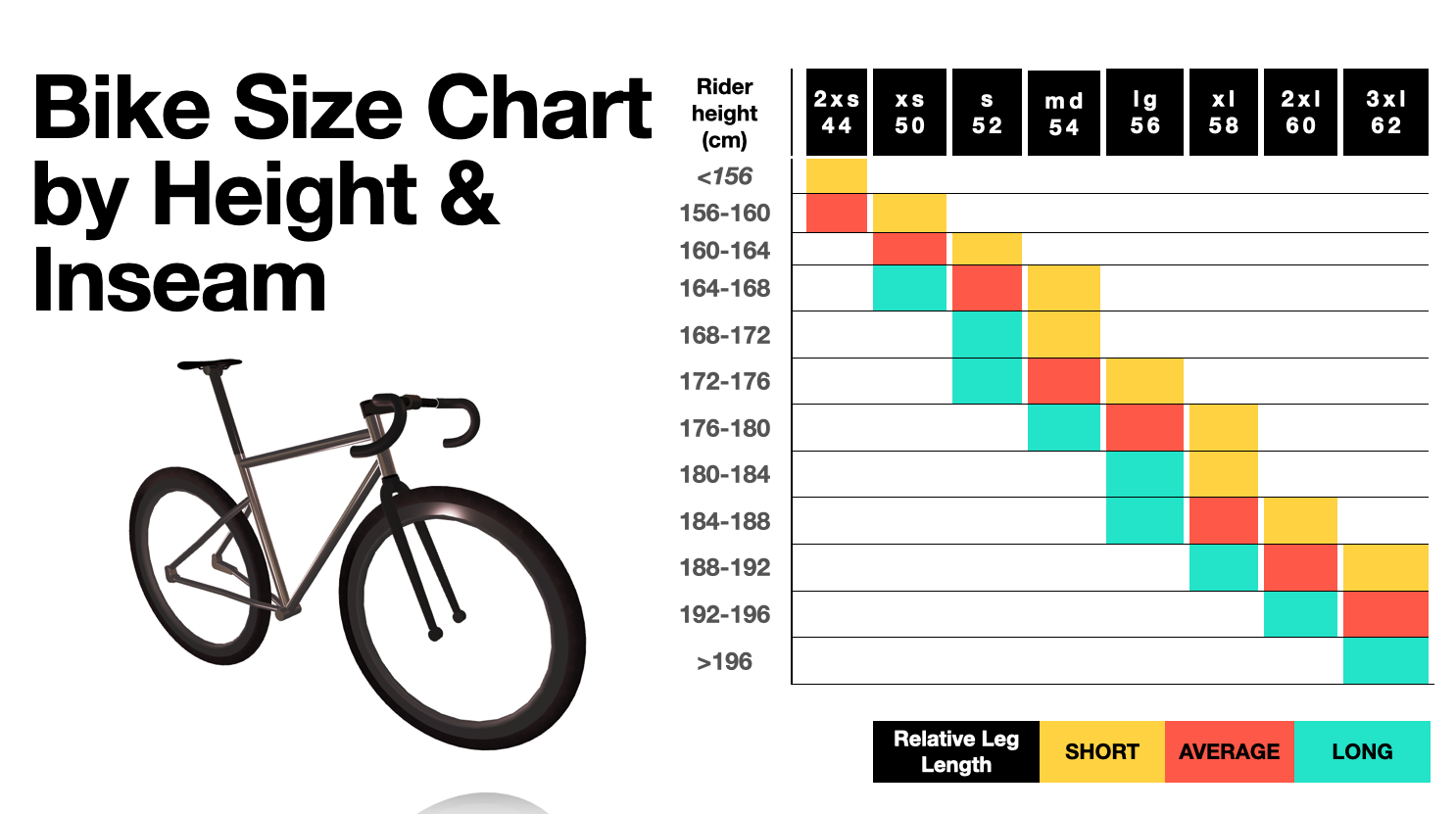
Advantages of size chart
- It's quick
- It's free
- It works well if your body is proportionally balanced
- They are made by the same people that designed your bike, so it's pretty reliable.
Disadvantages of size chart
- People's height often fall in between size guidelines
- Does not take into account your entire body's proportions
- You don't know how modifying certain components (spacers, stem lengths, seat height) will change the way it fits.
- Doesn't say much about how the bike will feel. (some bikes are designed to have a much more aggressive position than others)
Method #2: Bike Size Calculators
If Size Charts by height don't make you confidence, online bike-sizing tools can help you get there.
You plug in your body dimensions, riding style, and what kind of bike you want, and voila! It spits out some recommendations.
There are a lot of options available online, but here are some of the main ones.
My Velo Fit ($35 usd/2 week access)
MyVeloFit's App is the world's most popular DIY bikefitting and sizing tool there is.

Inputting your body's dimensions only take a few moments using your phone's camera and AI pose detection technology.
The app also gives you access to a bike database of roughly 35 brands and 250 models. This is a great feature, but if the bike you want isn't one of them you are out of luck.
Best Bike Advice $14.95 cad
Best Bike Advice Calculator takes into account your body dimensions, riding style and flexibility and outputs recommended geometry ranges.
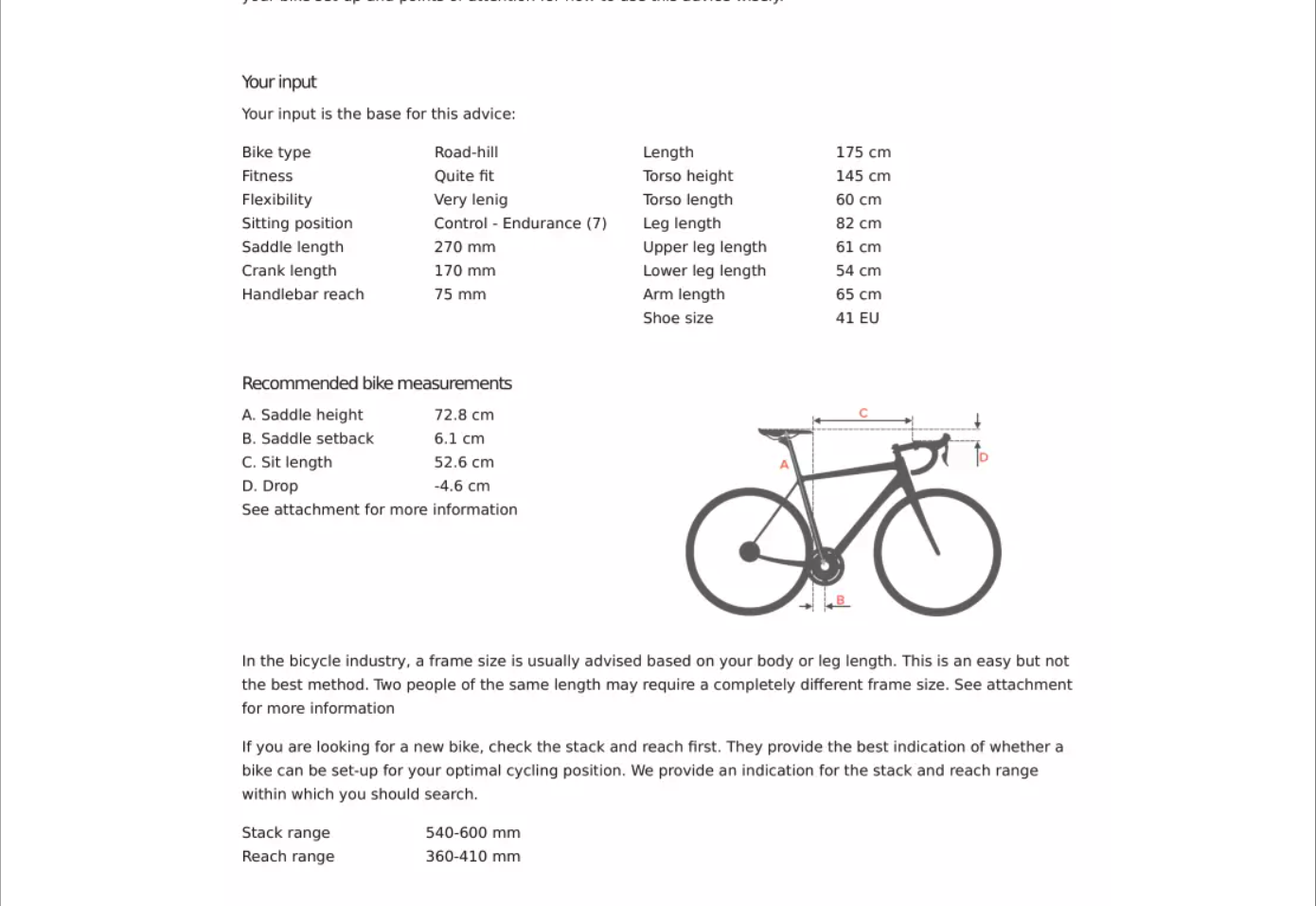
Unfortunately, I haven't found their results to be very helpful in finding my bike size.
The recommended Stack and Reach ranges on Best Bike Advice are very wide.
as you can see above:
- stack: [540mm, 600mm] -> 60mm range
- reach: [360mm, 410mm] -> 50mm range
For reference, the 2023 Specialized Roubaix SL8 size 49, 52 and 54 all fall within that range... Not exactly helping us narrow things down.
WrenchScience.com - Fit System FREE
Don't let it's price tag fool you. The WS Fit System is actually a very competent Bike Size calculator.
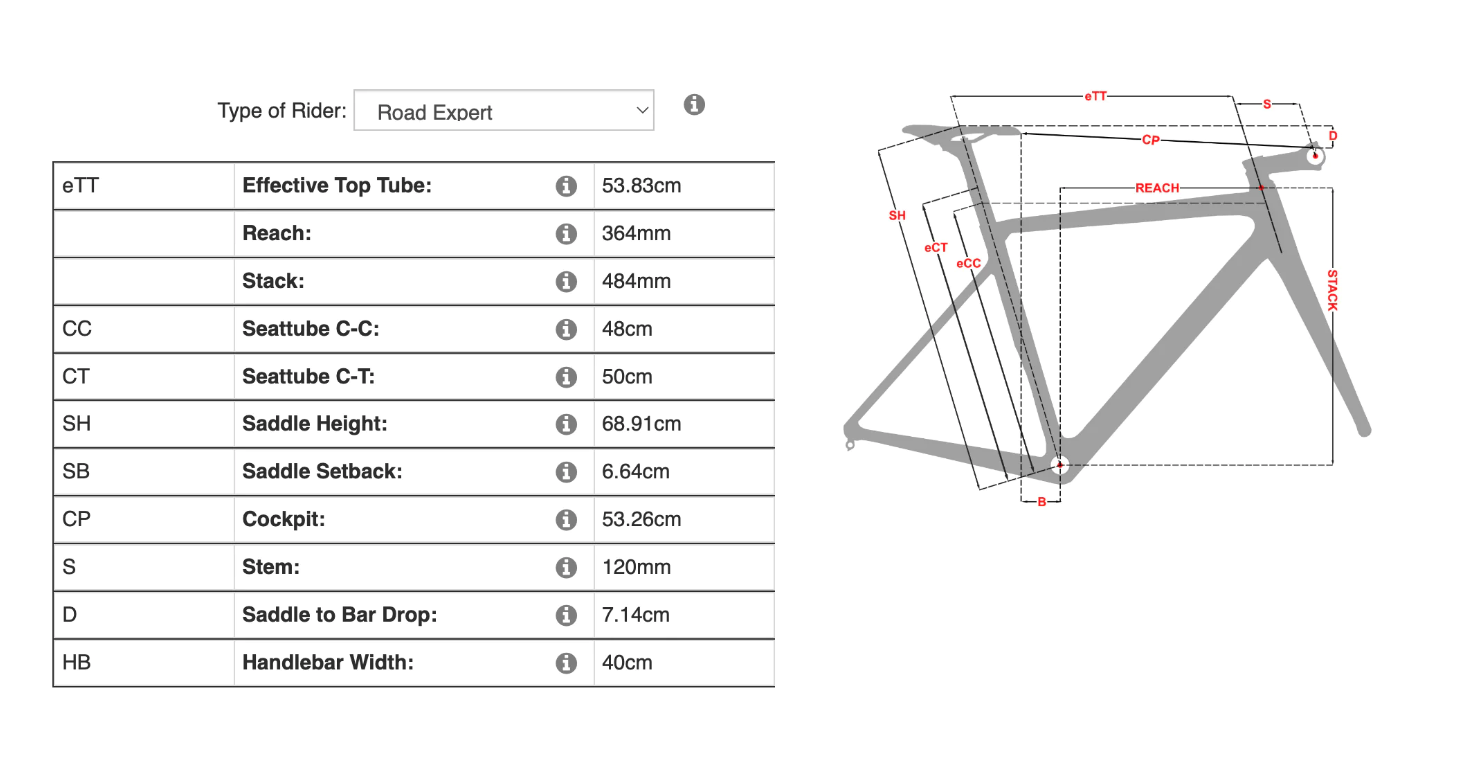
The Fit System will output exact geometry numbers. You then have to find a bike that best matches those values on your own.
Even though this may seem like a disadvantage, I personally think this is the best bike size calculator out there. It's free, the results are precise, and you can apply them to any bike in the world.
Advantages of bike sizing calculators
- Considers more of your body's proportions than size charts
- Some of them take into account your riding style preferences
Disadvantages of bike sizing calculators
- They can output multiple recommended sizes at once.
- They are opinionated so using different apps might give you different results
- Some cost money
- Algorithm is black boxed, so you get the results not the reasoning behind them.
- There is no way of knowing how using different components will affect the bike fit.
Method #3: BikeFit Simulator
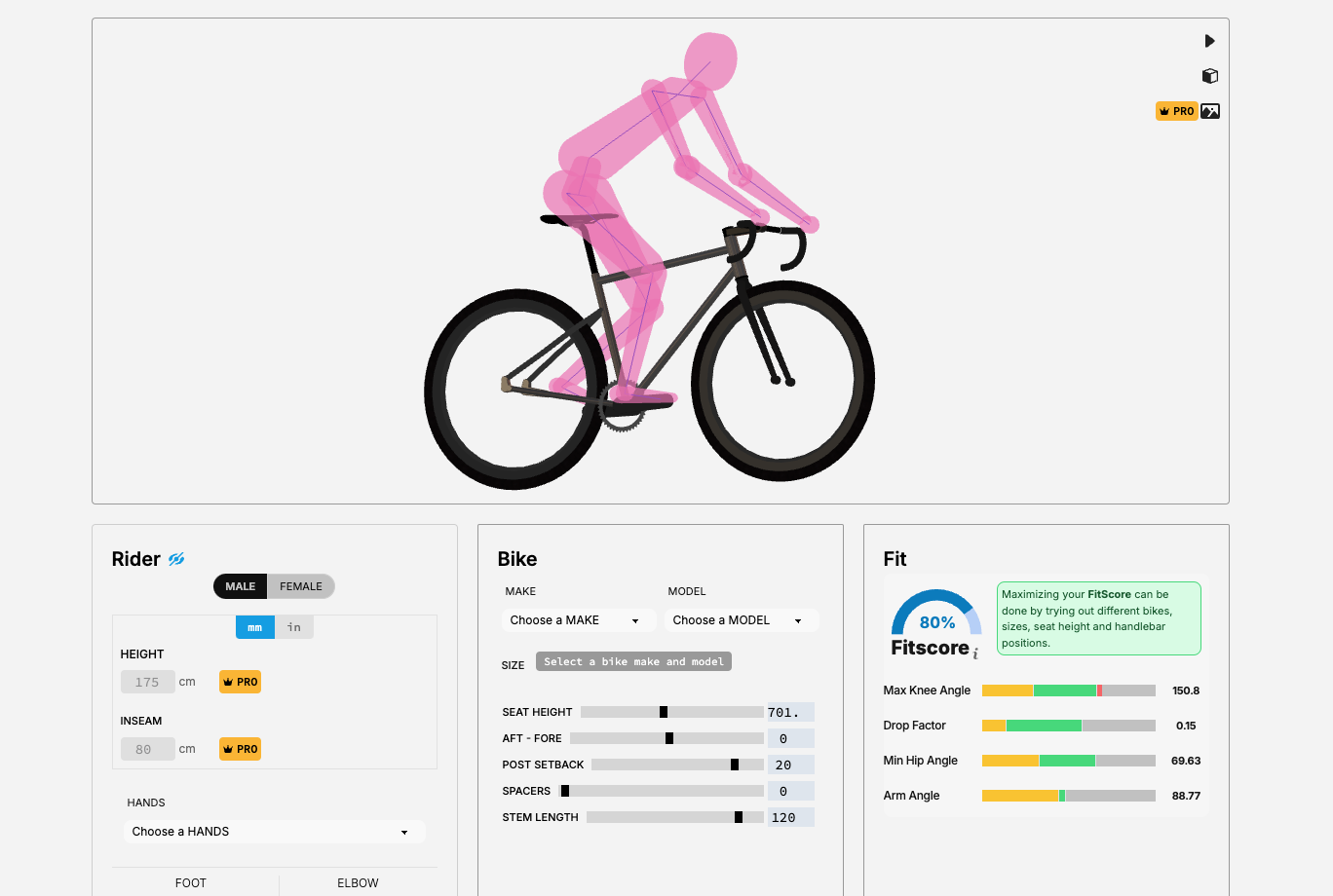
In reality, the chances that a new bike will fit you in the exact setup it is when you buy it are pretty slim.
You will most likely need to adapt it to you.
Adaptations such as moving your seat, playing with spacers, changing stem, switching handlebars, adjusting pedals, swapping cranksets exist precisely to get our bike position dialed in.
The Bike App's 3D BikeFit Simulator can help us take all those details into account when finding out the best bike size for us.
What is the Bikefit Simulator?
The Bikefit Simulator is tool that lets us simulate any bicycle-rider system in 3D.
It's like playing around with virtual Legos for your bike. You can tweak stuff like seat position, cockpit setups, and more to see what fits best.
Finding your bike size using the fitscore
The Fitscore's role is to answer the question: "will this setup fit me?". The higher the fitscore, the most likely it is that a particular setup will fit.
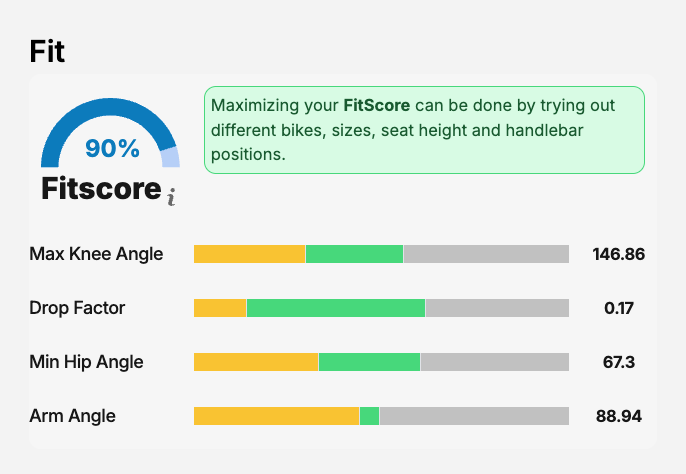
Fitscore is a compound score that takes into account hip angles, knee angles, weight distribution and more.
The bike database lets you virtually "try out" bikes in different sizes. Your size is the one that maximizes your fitscore with the least adaptations required.
If your bike isn't in the database, you can always create your own custom geometry and use that one as well.
Advantages of the BikeFit Simulator
- Accounts for Body Proportions
- You can customize the entirety of your bike setup
- Fitscore gives a quantitative idea of how good a bike will fit.
- You can duplicate your actual bikefit using image upload feature.
Disadvantages of the BikeFit Simulator
- The Fitscore is opinionated
- Costs money
- Parameters such as flexibility, strength and body weight are not taken into account unlike a "real life" Bikefit done by a qualified professional
Method #4: Professional BikeFit
Some say that getting your hands and feet (and butt) on the bike is the ultimate way of finding out if it fits you.
Unfortunately, even that might not be enough... Our brains can be pretty bad at "feeling" if a certain bike fits us or not. This is especially true if you are new to cycling because you don't have any reference point to base yourself on.
What makes in person testing even more complicated is that there is very little you can learn is a 5-minute bike ride. In reality we need to ride for long periods (at least 1h) to really get a sense of how our body reacts to a new position. If you can do that, great, but this is simply not an alternative for most people.
What is truly best is getting yourself an appointment with a good bikefit specialist. If you make it clear to them that you are looking for a new bike, he/she will gladly guide you towards the best size for you.
The best bikefitters will often go a step further and recommend what specific models should suit you the best.
Advantages of the BikeFit Simulator
- Most accurate results
- You learn a lot in the process
- Decisions are based on "real life" data
Disadvantages of the BikeFit Simulator
- By far the most expensive method
- Not everyone has access to a professional bikefitter
- The quality of the Bikefit depends on the quality of the bikefitter
Advice for First Time Cyclists
The first bike I bought was a second hand 2006 Argon18 Platinum size XL (I'm 194cm tall, 97cm inseam) with nice campy wheels and groupset. I wanted a "racing" bike and I would not compromise on that.
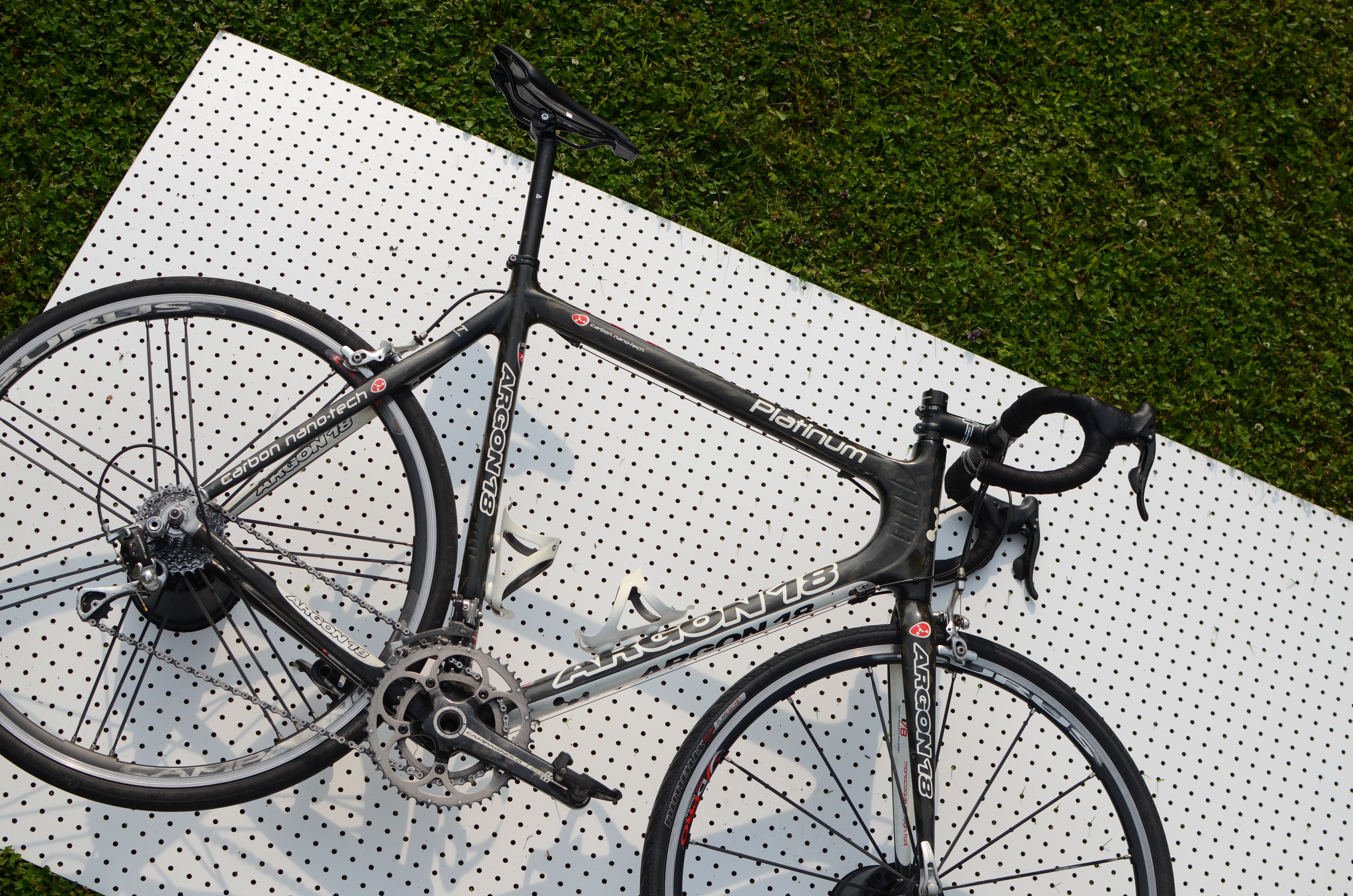
At the time, even if I had an additional 300$ to spend on a bikefit, I most likely would have put that towards an even better bike.
In the end, it cost me 900$ and DID NOT FIT ME.
I put the saddle all the way forward and a really short stem on it... no change.
If I spent more than 45min on that thing, my lower back would start to yell at me and my neck pain would have me staring down at my feet for the rest of the ride home
Do I wish that I had bought a different size back then? Yes.
This geometry was way too aggressive for me back then, and it took the enjoyment of many rides.
Do I regret buying it? Hell no!
This bike was my first datapoint.
During your first year(s) of riding, your body will change, and you will learn a lot about bikes, your body and its needs.
10 years later, after having ridden on many different bikes, having built a dozen of my own custom frames and tried out countless positions, something happened... My first bike now fits me pretty good.
What was once an object of torture in my mind is now not only tolerable, but enjoyable to ride.
My point is that your ideal bike position a year from now is not the same as the one today. A bike position is not something we adapt to, it's something that we adapt towards.
Conclusion
While getting a professional bike fit before purchasing a new bike is ideal, it may not always be practical. Utilizing size charts, bike sizing calculators, or bike fit simulators can provide valuable insights into selecting the right bike size. Remember, finding the perfect bike fit is a journey, and it's okay to seek guidance along the way.
